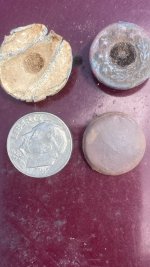Thead
Jr. Member
- Jul 16, 2005
- 59
- 15
- Detector(s) used
- TDI Pro, Surf PI Pro, BeachHunter ID, Sovereign GT and Excalibur 1000 (my favorite)
- Primary Interest:
- Beach & Shallow Water Hunting
Anyone have any suggestions for keeping an accurate search grid when detecting in the water (like at the beach)? When I search at the beach, I head out several yards into the water then back towards shore. I then step over around six feet and repeat the process. I find it very difficult to keep my bearing (especially when heading out looking at a horizon without any reference points). I wish there was some kind of super-accurate GPS device that I could use to control my search pattern.
Upvote
0





